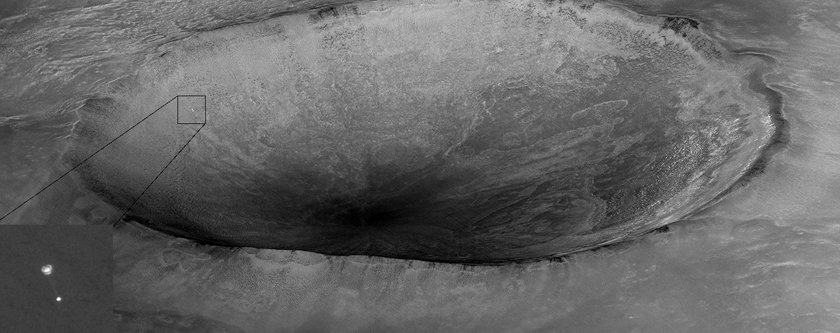
GPS and other modern technologies have long since replaced the sextant, but the concept of “navigating by the stars” hasn’t gone anywhere but up.
To outer space, that is.
Take it from mechanical engineering alum Philip Good ’83, who is leading the guidance, navigation, and controls (GN&C) for NASA’s Lucy mission, which launched in October 2021. Lucy will be the first spacecraft to explore the Trojan asteroids, or primitive asteroids orbiting in Jupiter’s path.
“Lucy’s star cameras take photos of the stars, which we then match to a map that allows us to perceive where the spacecraft is,” explains Good, who is a senior member of the engineering staff at Lockheed Martin, which designed, built, tested and now operates Lucy. “We read the sensors and actuators on the spacecraft and fire the small thrusters in combination to turn and point it in the right direction. We also apply torques to the reaction wheels, which rotate in one direction to turn the spacecraft in the other direction.”
Scientists expect that studying the asteroids will reveal important information about how planets, including Earth, were formed. The effort will set a record for most destinations explored in one mission: It will observe eight asteroids—seven Trojans and one in the main belt—over 12 years.
The mission takes its name from the skeleton of a pre-human ancestor discovered in Ethiopia in 1974 that revealed insights into human evolution. The goal is to revolutionize our knowledge of planetary origins and the formation of the solar system.
Good leads the GN&C team, which works to keep the spacecraft on the right trajectory and point the spacecraft in the right orientation according to the star tracker and other sensors.
“After the launch, we do instrument checkouts and calibrate high-fidelity instruments that may have shifted around during launch,” he says. “We also do flight testing to verify how the spacecraft might perform and implement trajectory correction maneuvers to get it on the right path.”
Good’s personal path to his now 37-year aerospace career—including work on missions such as Mars Odyssey, Mars Reconnaissance Orbiter, JUNO, MAVEN, and GOES—began as an undergraduate student at Lehigh.
He recalls taking classes on dynamics and engineering mechanics taught by Professor Ferdinand Beer, a well-respected researcher and author of many engineering textbooks that are still referenced in mechanical engineering education today.
Good, who also holds a master’s degree from Stanford University and PhD in aerospace engineering from the University of Colorado, Boulder, notes that the “rigorous curriculum” at Lehigh helped prepare him for some of the challenges he has faced in his career.
“We had to handle a tough workload and learn how to properly problem solve,” he says.
“The projects were challenging but taught us how to do things on our own. We also had to learn how to deal with failure, pick ourselves up, and move on to the next thing. At NASA, the missions sometimes don’t accomplish what we intended, but they are always a learning experience for us.”
Even so, Good’s career has been full of accomplishments: For example, in his work with the Mars Reconnaissance Orbiter program, he was instrumental in capturing the first image of a spacecraft landing on another planet. The photo depicts the Phoenix Mars Lander descending on its parachute toward Mars.
Good says one of his most exciting achievements was implementing the first image of a spacecraft landing on another planet while working on the Mars Reconnaissance Orbiter Program.
(Decent of the Phoenix Lander/Credit: NASA/JPL/University of Arizona).
Last year, an asteroid was named after him to commemorate his contributions to the design and operation of space probes, including his most recent work on Lucy.
Good and the GN&C team will continue to monitor Lucy's progress as it makes its way to the eight asteroids. The mission will involve maneuvering through several “gravity assists”—using Earth’s gravity to accelerate the probe—at various stages of the journey.
“Our team of navigators and the NASA navigators will determine how to keep Lucy on its intended path throughout the mission,” says Good, until its expected conclusion in 2033.
—Alyssa Caroselli ’24 is a student writer for the P.C. Rossin College of Engineering and Applied Science


